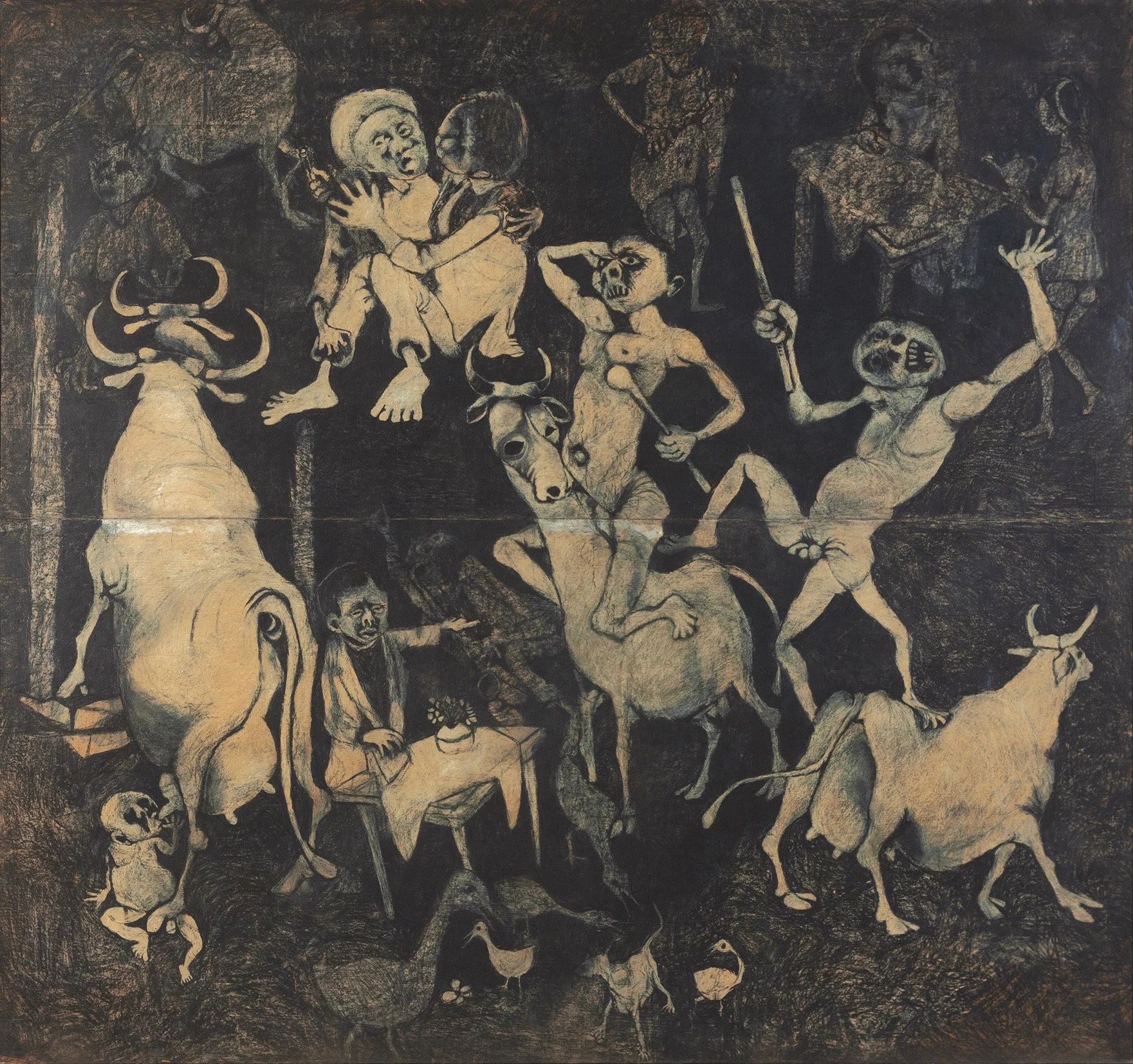Dumile Feni (b. 1942. Worcester, South Africa)
African Guernica
1967, charcoal on newsprint, 226 x 218 cm.
University of Fort Hare. Photo courtesy of University of Fort Hare ©Dumile Feni Family Trust 2021.
The Nazi’s bombing of the Spanish town of Guernica in 1937 prompted Pablo Picasso’s most famous painting, Guernica. Thirty years later, Dumile Feni created African Guernica, his own expressive response to violence, this time as perpetrated under apartheid. It is a highly disturbing image, with surreal human and animal figures emerging from inky black darkness. A baby suckles at the teat of a cow, a three-legged man seems to be dancing.
READ MORE ABOUT THE BACKGROUND…
In 1937, fire rained down on the town of Guernica, in Spain. The Nazis wanted to send a message to the Spanish resistance and dropped bombs on the quiet village for about two hours. As most of the menfolk were in the resistance army, most people in the village were women and children. Over 1500 people are believed to have been killed. The attack shook the world, and artist Pablo Picasso painted Guernica in response. The artwork symbolized those in power inflicting violence and suffering on defenceless people.
Feni’s work was completed a year before he went into exile, frustrated by life under apartheid. Just like the original Guernica depicts the powerful oppressing the defenceless, Feni uses metaphor and symbols to critique the apartheid government. The system of apartheid not only treated black and brown South Africans as people with fewer rights, on the same level as animals but also robbed everyone in the system of their humanity.

